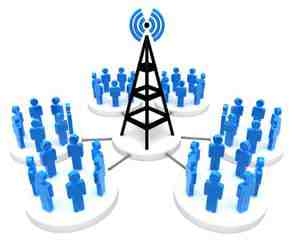
With the proliferation of different types of social networks (Facebook, Twitter, Pinterest, LinkedIn ...), companies can express themselves and interact with users using multiple channels. But the diversity of these channels, the pace of publications and interventions, requires a well structured organization. Scheduling publications on social networks can help the company/brand to remain competitive, but what are the challenges? What are the limitations and risks of using such method? For the company or brand, social networks represent a new channel to interact and gain customers or prospects. To engage users on social media (likes, sharing, retweets ...), corporate profiles require regular animation. Nevertheless, this animation should not be at the expense of another major challenge for the company: real-time interaction with users (private messages, publications on the page, mentions in a tweet ...).
The scheduling of publications gives a partial response to this problem.
Better visibility - pages and accounts that are update regularly tends to be more visible
- pages and accounts that are update regularly tends to be more visible Meet the habits of Internet users by posting the times they are present on the network.
by posting the times they are present on the network. Increase productivity by organizing the time spent on each social network.
A recent infographic by Buffer gives us an insight on the ideal number of posts on the various social networks on a daily basis. The result of this study is as follows: three tweets a day on Twitter, two post per day on Facebook, one daily publication on LinkedIn ...
In this context, the scheduling the publication of content shows several advantages:
Limit the time spent each day on the animation of your social account.
each day on the animation of your social account. Organize your tasks by separating publications and real-time interaction with users.
Maximize the reach of publications by posting at peak hours, without necessarily being connected to your social profile.
Scheduling publications on social networks may have some limitations. This is particularly the case of Twitter, where posts are required to be spontaneous and relevant! Any major event or change in the community must be taken into account. To what extent the company can take action to avoid the risks?
In case of major crisis (economic, geopolitical or major changes in the company), it is imperative to adapt the content on social networks or even suspend them!
Create a " bad buzz " with a scheduled publication.
" with a scheduled publication. Highlight a product, while it is being criticized by subscribers or fans.
Publication of unrelated content.
The scheduling of publications does not prevent an active and regular presence on your social profiles.
Maintain dialogue with users social networks (private messages, publications, tweets ....)
Follow the reactions of users after publication and respond to them if necessary (even for scheduled ones).
Facebook allows you to schedule of one or more publications directly from the page settings.
Create a post > Schedule the post > specify a date and time.
Twitter also offers this feature via the TweetDeck application.
Some tools can facilitate the organization of publications by aggregating the content from several social networks (Facebook, Twitter, Pinterest, LinkedIn) ...











